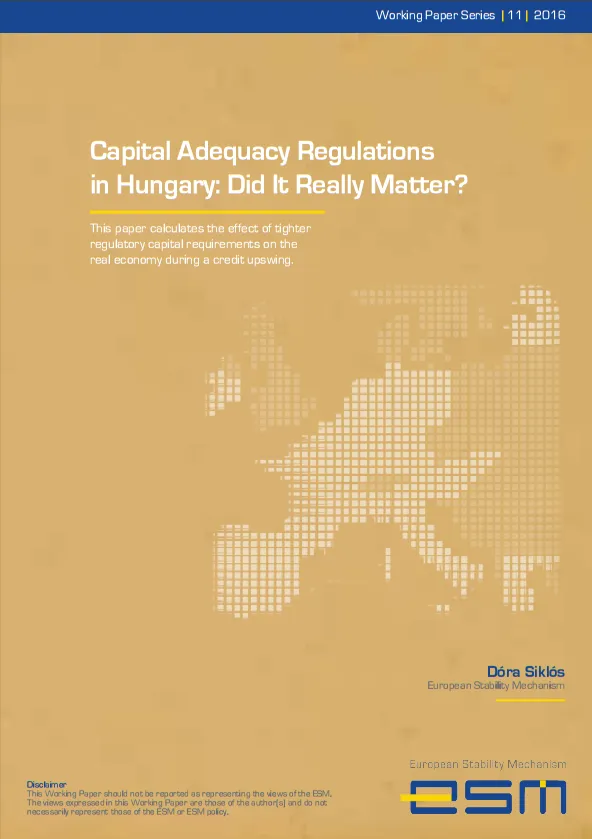Capital Adequacy Regulations in Hungary: Did It Really Matter?

Download PDF: Working Paper 11
This paper calculates the effect of tighter regulatory capital requirements on the real economy during a credit upswing.
Author: Dóra Siklós | Banking sector expert at the European Stability Mechanism
Abstract:
The main purpose of this paper is twofold. First, it aims to estimate the effect of the tightening of regulatory capital requirements on the real economy during a credit upswing. Second, it intends to show whether applying a countercyclical capital buffer measure, as per the Basel III rules, could have helped decelerate FX lending growth in Hungary, mitigating the build-up of vulnerabilities in the run-up to the global financial crisis. To answer these questions, we use a Vector Autoregressionbased approach to understand how shocks affected to capital adequacy in the pre-crisis period. Our results suggest that regulatory authorities could have slowed the increase in lending temporarily. They would not, however, have been able to avoid the upswing in FX lending by requiring countercyclical capital buffers even if such a tool had been available and they had reacted quickly to accelerating credit growth. Our results also suggest that a more pronounced tightening might have reduced FX lending substantially, but at the expense of real GDP growth. The reason is that an unsustainable fiscal policy led to a trade-off between economic growth and the build-up of new vulnerabilities in the form of FX lending.
Disclaimer: This Working Paper should not be reported as representing the views of the ESM. The views expressed in this Working Paper are those of the author(s) and do not necessarily represent those of the ESM or ESM policy. No responsibility or liability is accepted by the ESM in relation to the accuracy or completeness of the information, including any data sets, presented in this Working Paper.
JEL codes: E58, G01, G21, G28